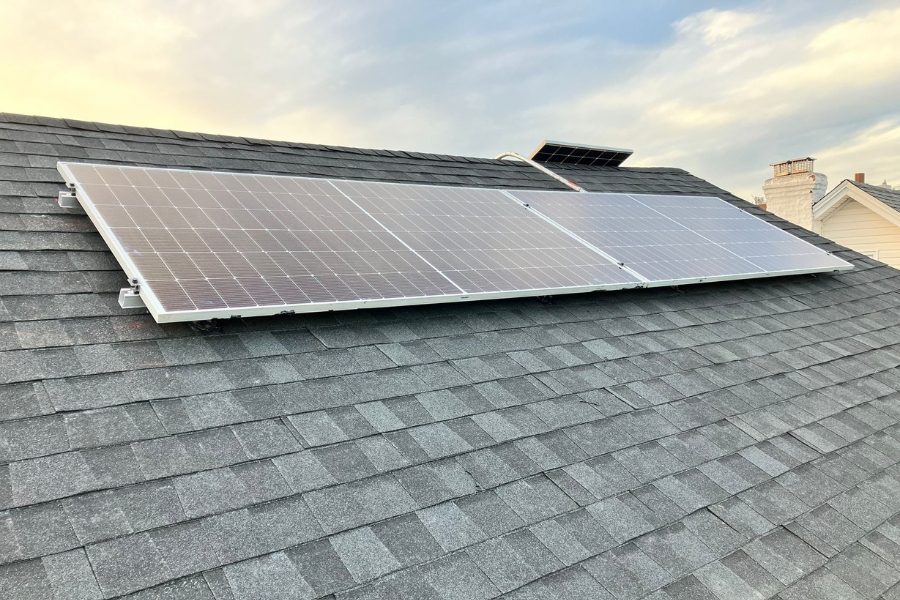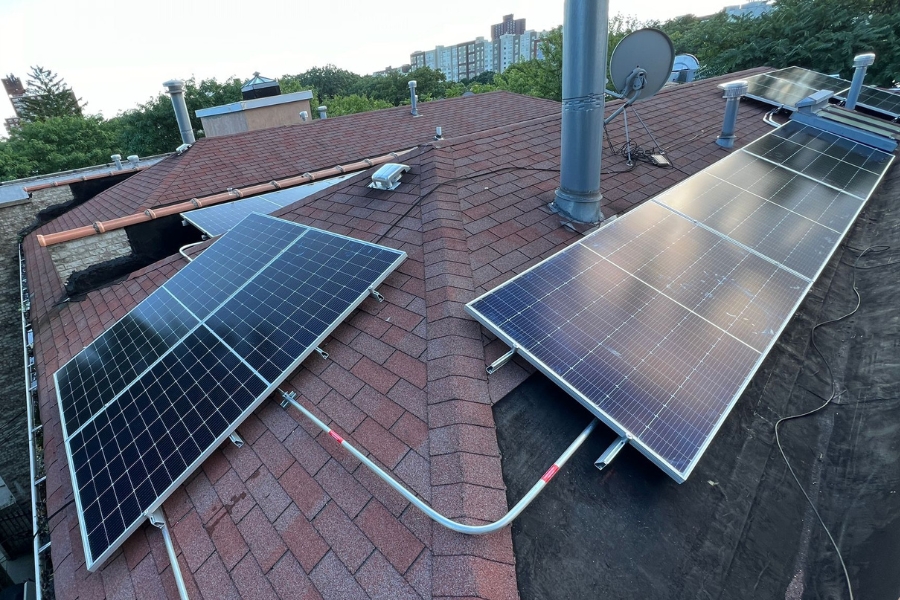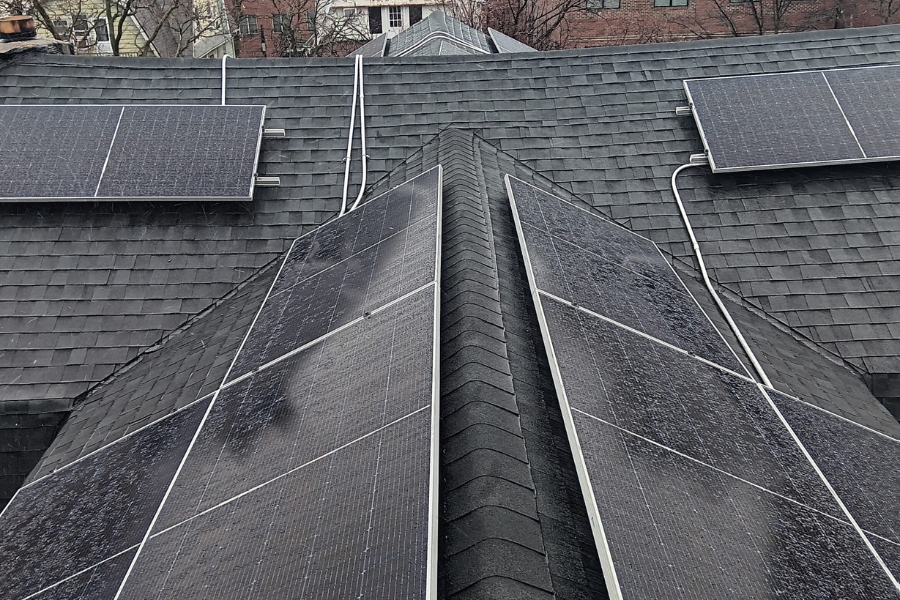When solar companies in NYC tell you it’s not possible to install a roof full of panels, you probably shouldn’t. One of these reasons is because of the NYC fire code. The fire code rules for solar panels in NYC don’t just affect how panels look on your roof. They also determine where and how to place them.
These rules protect firefighters and safeguard your property in an emergency. We’ll highlight some factors to consider when setting up your solar panels on your roof.
Why Fire Codes Exist in the First Place
Fire codes exist to keep everyone safe. In New York, buildings are packed in tight, so firefighters need quick access to rooftops in an emergency. If your roof is covered in panels, it’s hard for them to move around, set up ladders, or even cut openings if needed.
That’s why NYC’s fire code spells out exactly how solar panels should be spaced, where access paths go, and how much of your roof can actually be covered. Knowing these requirements will guarantee that your solar panel design is compliant and accessible to firefighters.

Building Codes That Go Hand-in-Hand With Fire Rules
In general, the design, installation, and operation of solar panel systems should be in compliance with the Electrical Code and construction codes, which include the Building Code, Mechanical Code, and Plumbing Code. Here’s a summary of what each code covers and how it’s related to solar panels.
- Electrical Code: Guarantees all wiring is safe and done by a licensed electrician. This prevents shocks or fire hazards.
- Building Code: Checks that your roof is strong enough to hold panels and that they don’t break height or zoning rules.
- Mechanical Code: It sets rules for installing rooftop equipment so installers don’t block walkways and maintenance crews can work safely.
- Plumbing Code: Only matters if your system connects to hot water. It makes installers place pipes correctly and keeps them from leaking.
How Roof Shape Affects Placement
Each roof shape influences how officials apply the fire code. The fire code rules for solar panels in NYC depend on the type of roof you have. Here is a quick summary of the rules but we highly recommend you read the fire code rules for solar panels in NYC yourself in detail.
Flat roofs
Common in Manhattan and the Bronx, these usually need wide access lanes down the middle of the roof. Installers may need to group panels in sections instead of spreading them across the entire roof. For flat roofs under 100 feet tall, there are a few exceptions:
- If one person can move panels on a hinged or sliding rack without tools, they can temporarily cover parts of the path.
- On very narrow buildings (25 feet wide or less), officials may allow panels to cover more of the roof. In those cases, permanent features like chimneys or skylights can shrink the access path a bit, but the path must always stay at least 4 feet wide.
Pitched roofs
Found in parts of Staten Island and outer Queens, these require edge setbacks so firefighters can anchor ladders and move around safely. For pitched roofs over 20 degrees on buildings under 100 feet tall, the fire code requires installers to design, install, and maintain panels according to the city’s standards. The goal is the same: guaranteeing firefighters can safely get onto and move around the roof if needed.
Hip roofs (a type of pitched roof)
For this style, which slopes on all sides and comes to a ridge at the top, the fire code requires a 3-foot-wide clear walkway along the ridge of each side where panels are placed. This gives firefighters a safe place to work along the highest part of the roof.
Irregular roofs
Some brownstones or older properties have unique shapes. These may call for customized layouts to meet fire code rules for solar panels in NYC.
What You Can Do Before Planning Your Setup
Research is key before you even begin the process. Here’s what to do before deciding on your final solar panel layout:
- Check local fire code documents: The New York City Fire Department (FDNY) publishes guidelines that outline roof access and panel placement. Reviewing these will give you an idea of what’s allowed.
- Look at your roof from a safety perspective: Ask yourself, “If firefighters needed to get on my roof quickly, where would they go?” This can help you visualize access paths.
- Talk to neighbors: If you live in a row of connected houses, sometimes the way your panels are arranged can affect shared roof access.
- Work with an expert who understands code: Not every contractor will have deep knowledge of NYC-specific rules, so it’s important to find one with local experience. Our experts at Solar Pro are trained to install panels with the fire code in mind, so rest-assured your panels are compliant with all codes.
Easy-to-Miss Fire Code Mistakes
Even with clear guidelines in place, it’s easy to make mistakes when planning a rooftop system. Some of these slip-ups can cause code violations down the line. Be sure to steer clear of these so you don’t run into issues with fire code rules for solar panels in NYC:
- Thinking that more panels are always better: Covering every inch of your roof isn’t allowed under fire code rules for solar panels in NYC. Leaving pathways for firefighters is non-negotiable.
- Forgetting about roof access hatches: Many NYC roofs have hatches or skylights that firefighters may use. These need clearance as well.
- Not checking local amendments: Fire codes (and all codes for that matter) update frequently. New York sometimes adjusts rules differently from other states, so you should always check the latest version.
Following The Rules Pays Off
The fire code rules for solar panels in NYC shape how panels can be arranged on rooftops. While the rules may seem strict, working with a certified installer will guarantee your solar panel design is accessible. Understand the guidelines and plan, don’t be afraid to speak up if you notice something is wrong – you’ll set yourself up for a smooth process. In the end, balancing safety and performance guarantees your investment supports both your home and the community.


